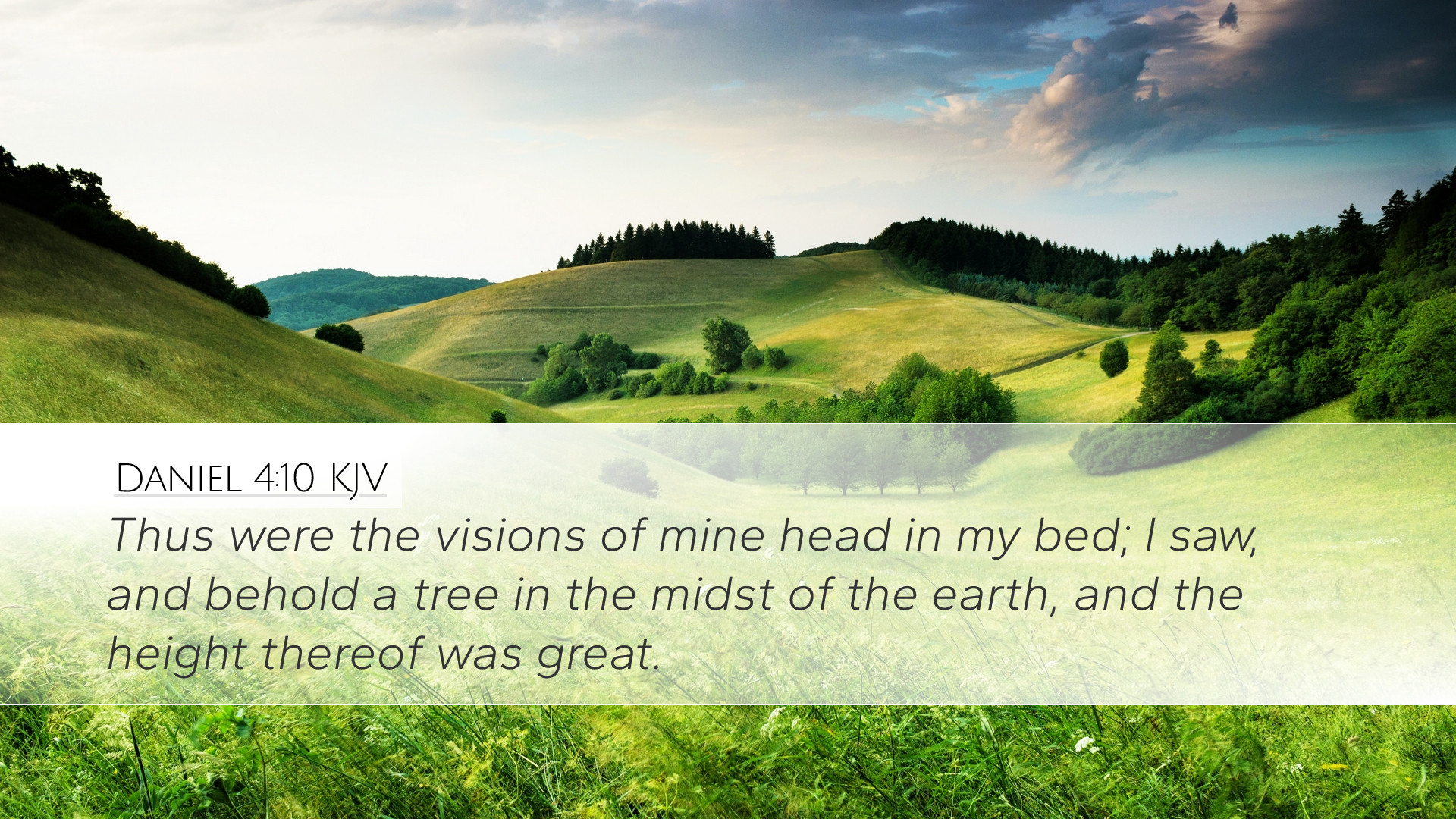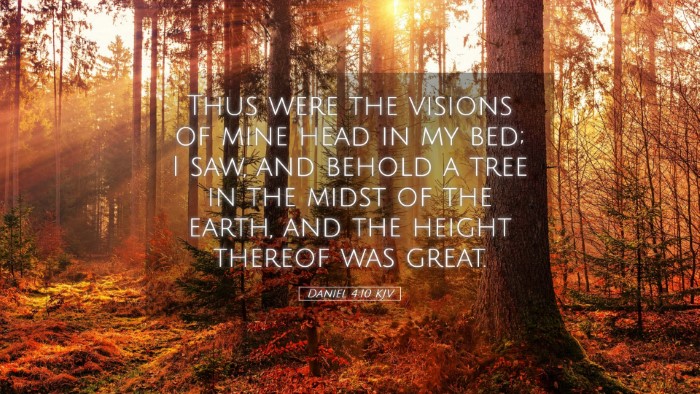Commentary on Daniel 4:10
Daniel 4:10 states:
"Thus were the visions of mine head in my bed; I saw, and behold a tree in the midst of the earth, and the height thereof was great."
Introduction
This verse is part of a larger narrative involving King Nebuchadnezzar's troubling dream, a dream that would ultimately serve as a divine warning regarding his pride and impending punishment. Various public domain commentaries provide insights into the theological, historical, and literary significance of this passage. Below, we summarize significant perspectives from established Biblical scholars such as Matthew Henry, Albert Barnes, and Adam Clarke.
Contextual Analysis
In analyzing the context of Daniel 4:10, it is crucial to recognize the setting of Nebuchadnezzar's dream, which serves as a pivotal point in Chapter 4 of the Book of Daniel.
- Historical Background:
Historically, Nebuchadnezzar was one of the most powerful kings of Babylon. His reign was marked by military conquests and monumental architectural achievements. However, his pride becomes a central theme in this account, leading to divine punishment.
- Theological Significance:
This verse introduces the theme of God's sovereignty over earthly kingdoms and rulers. It illustrates the contrast between God's eternal dominion and human arrogance.
Verse Analysis
The phrase "the visions of mine head" points to the nature of the revelation given to Nebuchadnezzar. His dreams were not merely the products of his imagination; they were divine communications laden with meaning.
Theological Implications
This verse opens the door to profound theological implications regarding divine governance and human authority.
- God's Sovereignty:
The primary message of Daniel 4 is the sovereignty of God over all nations and rulers. The imagery of the great tree evokes a sense of God's control over affairs on earth. Despite the might of kings like Nebuchadnezzar, God is the true ruler who can bring low those who exalt themselves.
- Human Pride:
The narrative serves as a cautionary tale about pride. Nebuchadnezzar's vision foreshadows a fall from grace. The profound notion of accountability to God resonates throughout this passage, reminding believers of the importance of humility.
Applications for Pastors and Theologians
This passage provides rich material for preaching and teaching. Here are some applications worthy of reflection:
- Exposition of Pride:
Pastors might focus on the dangers of pride in their congregations, using Nebuchadnezzar's downfall as a poignant example of how pride leads to spiritual ruin.
- Sovereignty of God:
The affirmation of God's sovereignty over worldly matters can be an encouragement to believers facing uncertainties. Understanding that God is in control provides hope amidst turmoil.
- Exploration of Dreams and Visions:
The significance of dreams in the Bible can be an intriguing topic, provoking discussion about how God communicates with His people today.
Conclusion
Daniel 4:10 provides a powerful reflection on the nature of God’s sovereignty and the consequences of human pride. The insights gathered from public domain commentaries enrich our understanding of this complex text, offering layers of meaning that invoke both reverence and caution. As students, theologians, and pastors engage with this scripture, they are encouraged to explore its depths and apply its lessons to the contemporary context.


